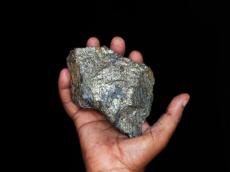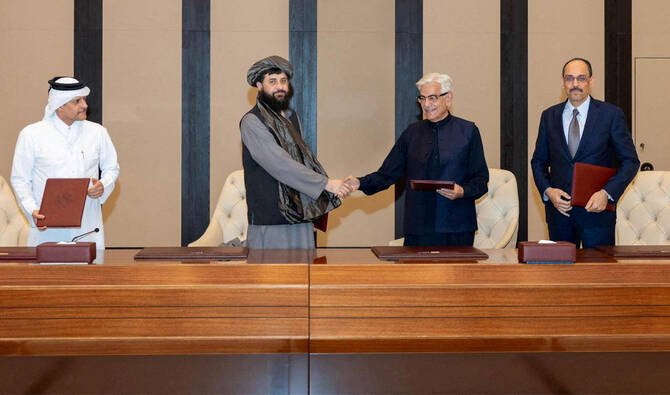|
|
TODAY.AZ / Politics
Who stole the data on rare earths in Karabakh?
03 November 2025 [11:11] - TODAY.AZ

Rare earth metals... In the last couple of years, only the
lazy one hasn't talked about them. This category of minerals has come to the
fore due to the rapid growth of technologies that depend on the use of rare
earths. And the topic was especially relevant due to the fact that China has
become the absolute leader in the extraction and processing of these resources.
In the 90s, the United States was among the leaders thanks
to the California mine. However, the economic problems that befell the mine and
the cessation of production for several years deprived the States of leadership
points. China, which mined 31 thousand tons of rare earths thirty years ago,
produced 270 thousand tons in 2024, and it is not possible to keep up with it
in the near future. Whatever the reasons for this breakthrough in the West, the
fact remains that today China controls not only the extraction, but also about
90 percent of the world's processed rare earth metals, and also has the largest
facilities for their separation and purification, foreign media write.
Last year, production in the United States amounted to 46
thousand tons, but China remains the main supplier of rare earths to the United
States. In 2023, its share in the American market was 70 percent.
Anyway, rare earths are a strategic resource today, and
everyone is looking for them. The President of Belarus has instructed the
government to start searching for rare earth metals and other resources in the
republic. The Central Asian countries have found themselves at the epicenter of
Western interest due to their vast reserves of this strategic raw material. In
the near future, Donald Trump will meet with the leaders of the Central Asian
countries in Washington, and it is expected that rare earths will become the
main topic of discussions. It also turned out that there are many things in
Ukraine. These riches were ignored until the country's rare earth reserves
attracted the new head of the White House. It turns out that Ukraine has 21 of
the 30 substances that the European Union defines as "critical raw
materials," and reserves of these raw materials account for about 5
percent of the world. However, they have never been commercially developed,
they were obtained only as by-products from the extraction of other metals.
The rare earth boom has swept the world. And involuntarily, we also had a legitimate question: are there such resources in Azerbaijan?
We'll leave the answer to the specialists. There is no such
information in the public domain. However, during a web search, I came across
an article published in the Armenian media in June 2011 by Igor Muradian. The
article is kind of off-topic, but very interesting.
Igor Muradyan is one of those to whom the region owes the
thirty-year conflict. He was the first leader of the Karabakh Committee and
stood at the origins of the process of the separation of its ancestral
territories from Azerbaijan. Muradian did not live to see the Second Karabakh
War for two years and did not see the collapse of his brainchild. It's a pity.
An ardent nationalist told in an article about an honored
geologist of the Azerbaijan SSR named Tsaturov. When, after the ethnic
cleansing of Azerbaijanis in Armenia, Armenians had to leave Baku, Tsaturov's
neighbors, Azerbaijanis, offered to help him take his valuable collection of
art plates to the train station from where the train was leaving for Yerevan.
Taking advantage of the friendly location of his neighbors, who knew how
precious this collection was to him, the honored geologist decided in December
1988 to illegally export to Armenia the materials of geological exploration
work carried out by various geological expeditions on the territory of Karabakh
and in the surrounding areas, the very ones that were subsequently occupied by
the Armenians. That is, the neighbors thought they were helping him take out
the family heirloom in the boxes, not suspecting that they were contributing to
the theft of valuable geological material and documents.
In principle, there is nothing surprising in the behavior of
honored geologist Tsaturyan, if we recall how many artifacts and other valuable
materials were stolen by Armenian black diggers during the escape from the
occupied territories during the offensive of the Azerbaijani army. Like
Tsaturyan, these thieves exported all this with a certain calculation. In 1988,
it was already clear that this time the conflict would not be resolved and
Moscow was not going to stop Yerevan. Given the Soviet leadership's favor to
the Armenians, it was expected that they would be able to achieve their goals
and seize foreign lands. And then the information about the bowels will become
very useful for Armenia, which has swollen on innocent blood.
As can be learned from Muradian's article, among the materials illegally exported to Armenia was a report to the Azerbaijani government dated May 1968, which was later for some reason withdrawn from the geological fund of Azerbaijan and classified as "top secret." The author does not specify why the document was seized or how it got into Tsaturov's hands. The report contained information on the true reserves of precious and non-ferrous metals based on the results of a special Murovdag expedition conducted in the Karabakh region, as well as in Kalbajar, Lachin, Gubadli and Zangelan districts. The report indicated that these areas have the following reserves of A1+ B1 metals: gold - 1,250 tons, silver - 4,550 tons, copper - 1,840 thousand tons, lead - 660 thousand tons, zinc - 775 thousand tons, cobalt - 150,000 tons, chromium - 2,250 thousand tons (with taking into account the flanks - 3,500 thousand tons). The report also contains information about significant reserves of aluminum raw materials and iron ores with an iron content of up to 45-55 percent. There are numerous traces of rare earth elements - lithium, beryllium, and others.
In addition to this report, there were other notes on the
presence of mineral water outlets, semiprecious and ornamental stones, spar,
and natural coloring agents. There was also information about mineral deposits,
including precious and non-ferrous metals.
In December 1988, these materials, according to Muradian,
were placed in the geological fund of the Department of Geology of the Armenian
SSR. Armenia was preparing for the occupation and declaration of these
territories as its own, which was to be followed by the development of mineral
resources. However, Armenia could not use the data, because in the winter of
1993, these materials were sold by one of the responsible government officials
to a US citizen for $ 2,000. In the same winter, as Muradyan writes, Tsaturov
himself died of exhaustion in incredibly difficult conditions before his 80th
birthday, and no one knows where he is buried.
In 2011, Muradyan recalled this story in order to draw the attention of Yerevan and the separatist regime to what is in the depths of the occupied areas. He urged not to look at the lands around the former NKAO as a desert, because these are the richest lands. The Fizuli, Jabrayil, Kalbajar, and Lachin districts contain gold, copper, chromium, and silver, and there are even good oil forecasts in Fizuli, Jabrayil, and Aghdam.
By the way, during the years of occupation, the Armenian
media repeatedly reported on the plans of Yerevan and Khankendi to start oil
exploration in the occupied territories. It didn't come to that, because they
needed foreign partners for such projects, and no serious oil producing company
in the world would work in the occupied territories. Although in Soviet films
we were often surprised to find oilmen with Armenian surnames and never with
Azerbaijani ones, we did not know how to search for and extract oil in Armenia.
In 2019, there was "joyful" news in the media - it was possible to obtain
synthetic petroleum products from coal, which was illegally mined in the
Agderinsky district, using new technologies. But they didn't have time to turn
around. Grandiose plans remained unfulfilled.
Igor Muradyan wrote in 2011 about the geologist Tsaturov,
who stole valuable materials from Baku, in order to explain to the aggressor
what he managed to get hold of. It is necessary to create a geological survey
in Karabakh, attract specialists from Russia, Turkmenistan, Uzbekistan and
foreign capital, pointed out the nationalist, who, due to his narrow mindset,
does not understand why all this has not yet been done.
He died without finding an answer to this question.
URL: http://www.today.az/news/politics/263158.html
 Print version
Print version
Connect with us. Get latest news and updates.
See Also
- 03 November 2025 [15:34]
Azerbaijan, EU discuss deeper media cooperation and information security - 03 November 2025 [13:58]
President: No second country has achieved Victory as brilliant, complete, and absolute as ours - 03 November 2025 [13:48]
Funding for science in Azerbaijan more than doubled over past decade - President Ilham Aliyev - 03 November 2025 [11:37]
President Ilham Aliyev addresses meeting dedicated to 80th anniversary of Azerbaijan National Academy of Sciences - 03 November 2025 [11:11]
Who stole the data on rare earths in Karabakh? - 01 November 2025 [16:33]
Baku’s experience shows how post-war rebuilding can inspire other, says envoy - 01 November 2025 [16:21]
Sudan calls for global action over al-Fashir tragedy, draws parallel with Khojaly - 01 November 2025 [13:20]
Azerbaijanis in Germany strengthen unity at Alliance Board Meeting in Cologne - 01 November 2025 [12:28]
President Ilham Aliyev: Traditional friendship and brotherly relations unite Azerbaijan, Algeria - 01 November 2025 [12:21]
Vatican hosts Caucasus Muslims Office Chairman for interfaith talks
Most Popular
 Cologne holds Second Forum of Azerbaijani Engineers in Europe
Cologne holds Second Forum of Azerbaijani Engineers in Europe
 From Qaraba? to Kashmir: How shared struggles unite Pakistan, Azerbaijan
From Qaraba? to Kashmir: How shared struggles unite Pakistan, Azerbaijan
 Vatican hosts Caucasus Muslims Office Chairman for interfaith talks
Vatican hosts Caucasus Muslims Office Chairman for interfaith talks
 Sudan calls for global action over al-Fashir tragedy, draws parallel with Khojaly
Sudan calls for global action over al-Fashir tragedy, draws parallel with Khojaly
 Pakistan agrees to continue conditional ceasefire with Afghanistan
Pakistan agrees to continue conditional ceasefire with Afghanistan
 Sheikhulislam Allahshukur Pashazade meets Pope Leo XIV at Vatican
Sheikhulislam Allahshukur Pashazade meets Pope Leo XIV at Vatican
 US mulls ban on popular Wi-Fi routers
US mulls ban on popular Wi-Fi routers
